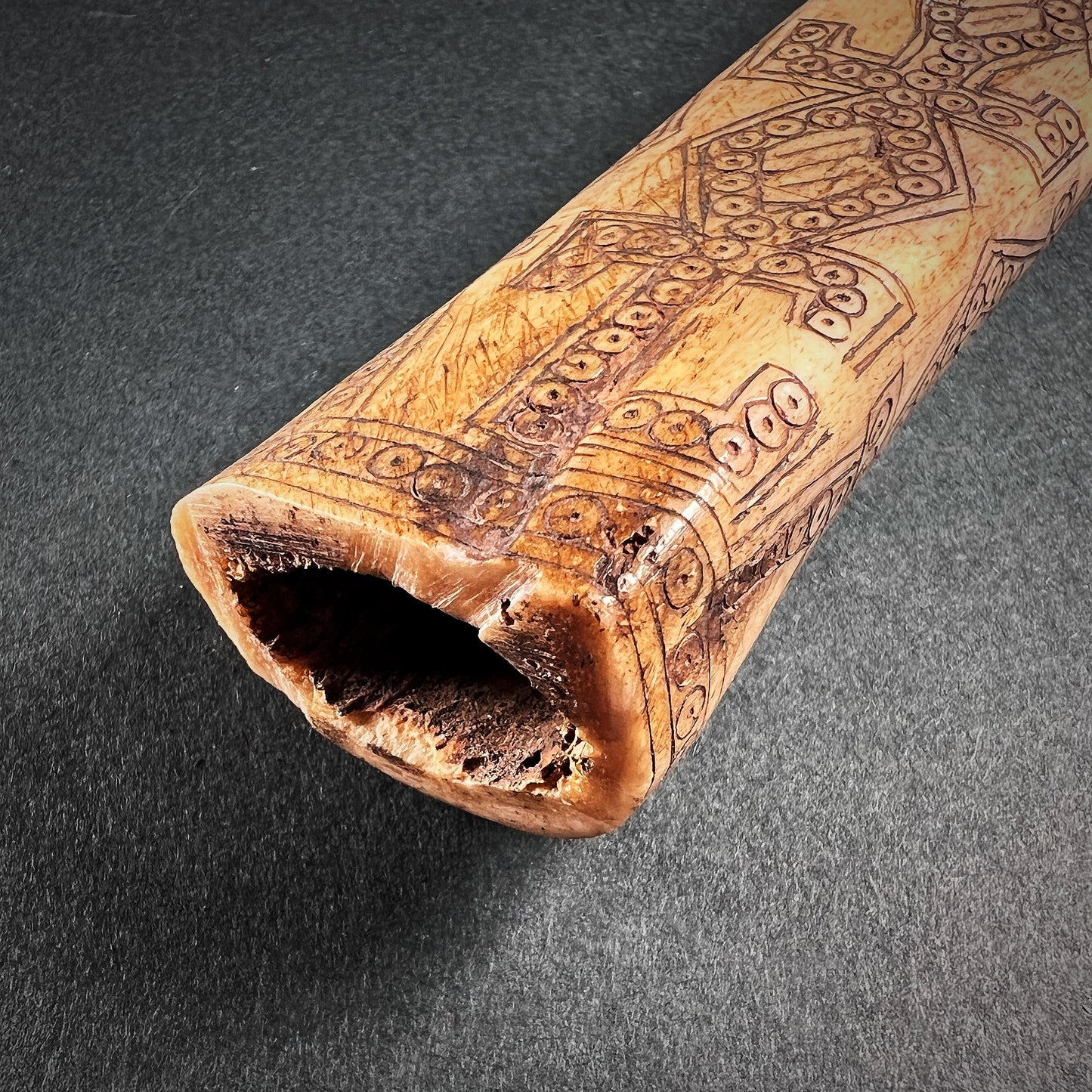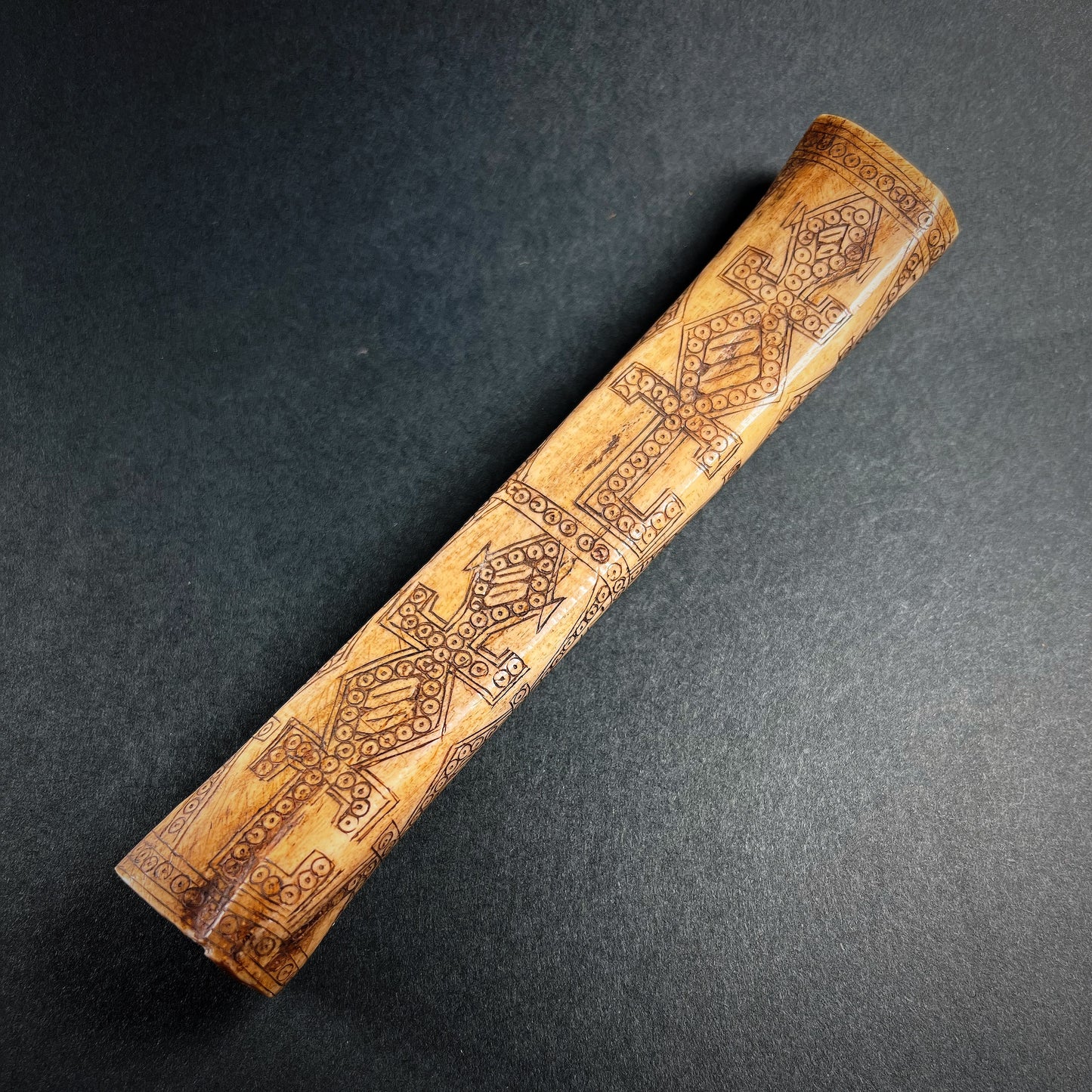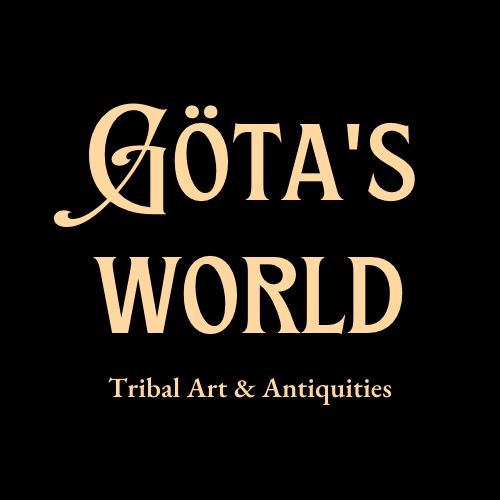Iban Dayak Buffalo Bone Betel Container
Iban Dayak Buffalo Bone Betel Container
Couldn't load pickup availability
Iban Dayak people, mid. or late 20th century, Central Kalimantan, Borneo, Indonesia.
Fascinating and highly polished betel container features a hand-etched and carved water buffalo (Bubalus bubalis) bone with traditional geometric motifs and animals such as lizards or crocodiles. Used by Dayaks to store herbs, or magical ingredients, betel lime etc. Original wooden lid missing. The Dayaks are a collection ethnic groups that have traditionally lived in the forests in both the Malaysian and Indonesian sides of Borneo. In the past, the Dayak were feared for their ancient tradition of headhunting practises (the ritual is known as Ngayau).
Though living along the banks of the larger rivers that convenient for fishing and hunting, most Dayak village economies in Central Kalimantan are based on agriculture. Dayaks have traditionally lived in villages with multifamily dwelling, often including longhouses. This is a structure supported by hardwood posts that can be hundreds meter long. At one side is a long communal platform, from which the individual households can be reached. In Indonesia, the Dayak indigenous religion has been given the name Kaharingan. The word means something like "way of the life", and this belief system includes a concept of many deities and often one supreme deity
The Ibans (called also Sea Dayaks) are a branch of the Dayak people and are located in the Malaysian state of Sarawak. Ibans were also renowned for practicing headhunting and had a fearsome reputation as a strong and successful warring tribe. Since the arrival of Europeans and the subsequent colonisation of the area, headhunting gradually faded out practise. Skulls from headhunting raids have traditionally been displayed in longhouses. Some longhouses today still have heads hanging from the ceiling as relics of their glorious past. The most recent ones are probably Japanese heads taken in World War II.
Good consition. Age-related wear. Size approx. 17,2cm x 2,8cm x 2,2cm.
Provenance: Finnish private collection.
References and further reading:
Who invented the Dayaks?: historical case studies in art, material culture and ethnic identity from Borneo, Dianne Margaret Tillotson, Thesis, The Australian National University, 1994. (https://openresearch-repository.anu.edu.au/handle/1885/116158)
Of Jars and Gongs: Two Keys to Ot Danum Dayak Cosmology, Raymond Corbey, C. Zwartenkot Art Books, 2016.
The Airmen and the Headhunters: A True Story of Lost Soldiers, Heroic Tribesmen and the Unlikeliest Rescue of World War II, Judith M. Heimann, Houghton Mifflin Harcourt, 2009.
Dayak Architecture and Art: The Use of Longhouse, Kaltimber, 20 July 2020. (https://www.kaltimber.com/blog/2020/7/20/dayak-architecture-and-art-the-use-of-longhouse)



-
Shipping
The shipment will be prepared in the course of 3-5 days and dispatched via Posti Group Oyj or purchased item(s) can be picked up from our shop during the store's opening hours (Tarkk’ampujankatu 4, 00140, Helsinki, Finland). Within the Finland, all items are shipped via Posti Group Oyj unless otherwise requested. We pack the items carefully and mainly in recycled materials because we want to save nature. You will receive the tracking number for your items by e-mail.
-
Returns
Returns and exchange will be accepted within fourteen days (14) of receipt at the purchaser’s cost to include freight and packaging. Items must be returned in the same condition as when they were shipped, and will not be accepted if damaged or altered in any way. Please inform us via email (info@gotanmaailma.fi) or by calling +358408408352 before sending. We do not accept returns more than 14 days after delivery.



